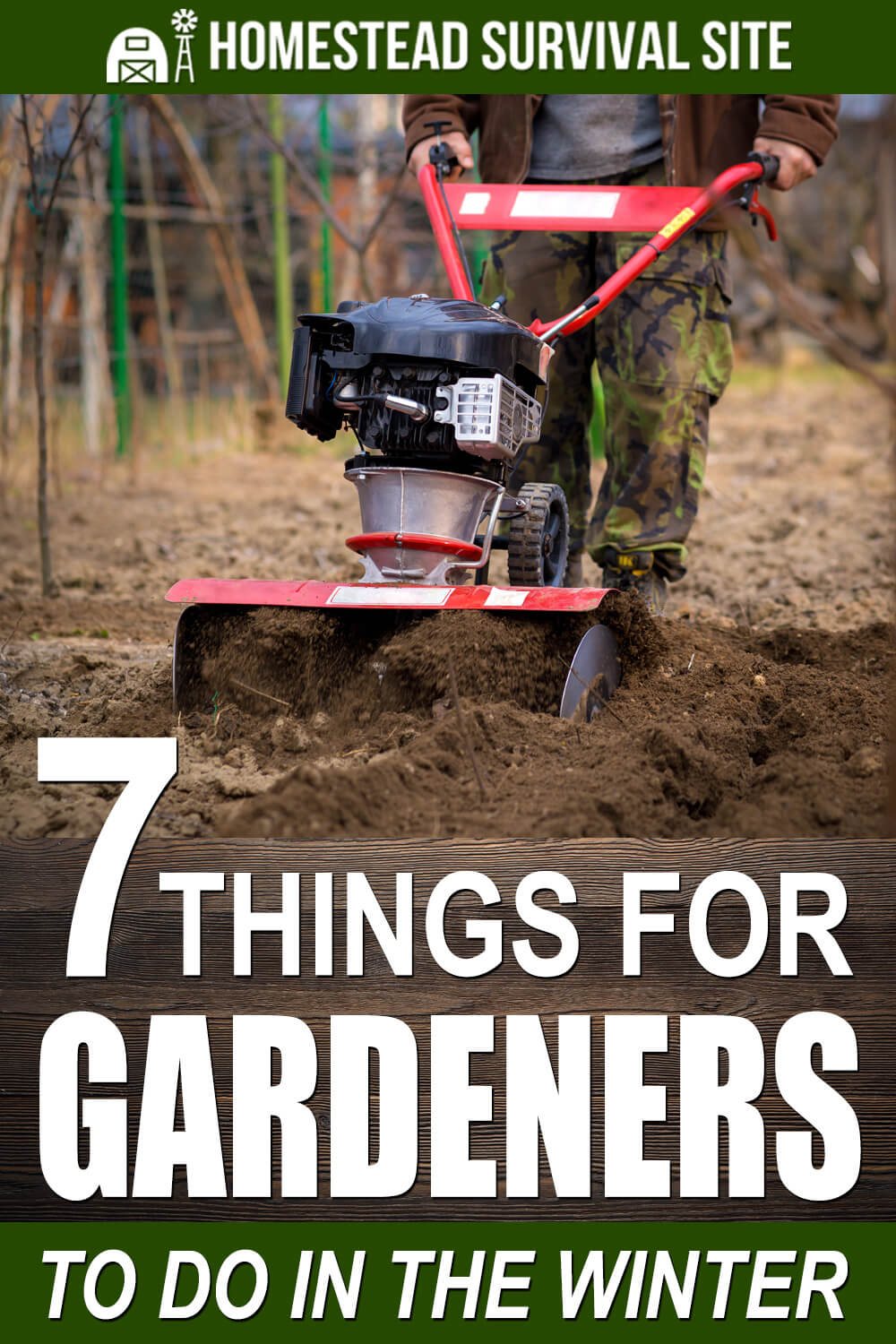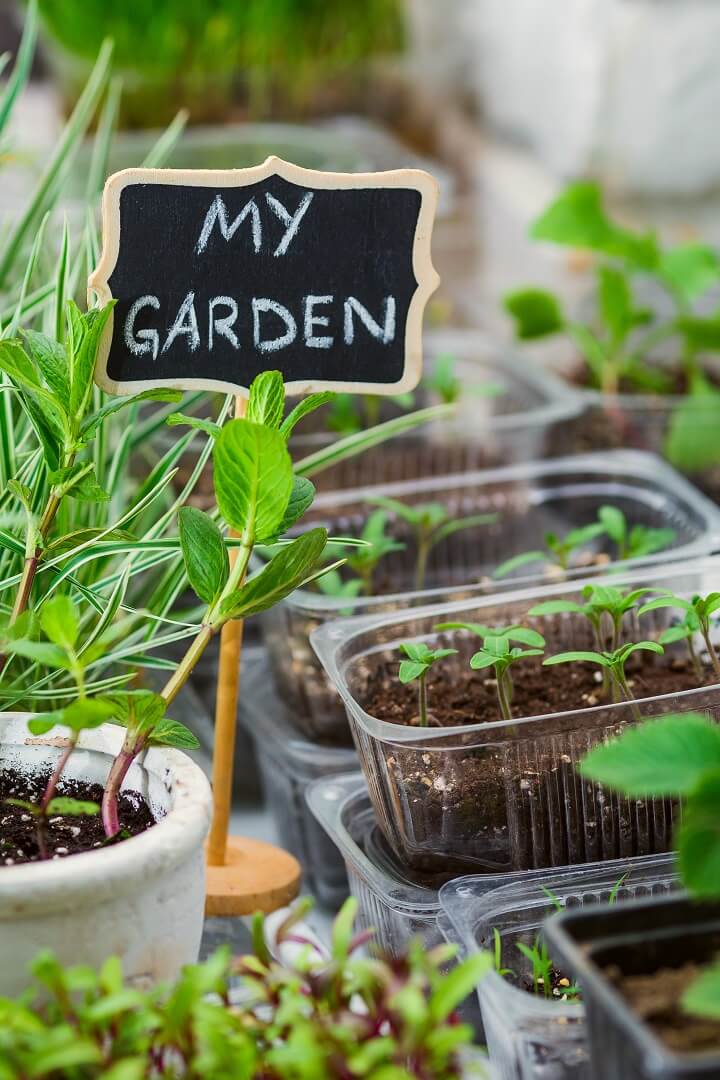[ad_1]

While you’ll probably have more inside work than outside work during the winter, it is important to use your time wisely. Here are some things for gardeners to do in the winter to prepare for the upcoming growing season.
Want to save this post for later? Click Here to Pin It On Pinterest!
1. Plant Cool Weather Crops
Most gardeners know that plants can be divided into two different types: cold weather and warm weather crops. Cool-weather crops actually do better when the air is a bit colder, and the sun isn’t as hot. Peas, lettuce, radish, broccoli, and carrots are all cool weather crops that can stand up to a bit of frost.
Some of us homesteaders are too far north to plant cool weather crops outside during the winter. The frost, snow, and negative temperatures don’t allow for anything to survive outdoors.
However, depending on your garden or homestead location, you may be able to get away with planting cool weather crops all winter long. Planting cool weather crops is a great way to keep your garden productive as well as still grow fresh fruits and vegetables for the family.
2. Order Seeds
Towards the end of the winter season, you may notice a few more seed catalogs arriving by mail to your doorstep. Ordering seeds is often a bright sign that winter is ending, and spring will be here soon.
Take the quiet time of winter to order the seeds that you want to try out in your garden this year and maybe add a few new ones to plant to see how they do in your area. It is easy to want to order the entire catalog, but use restraint when picking and choosing so that you aren’t overwhelmed once spring arrives.
3. Plan Out the Garden
Winter is the perfect time to plan out the next garden season. Take some time to reflect on what worked in the garden last year and what needs to be replaced.
Consider rotating your crops to different parts of the garden to account for those plants that like wetter or drier areas. Measure the garden space and plan to expand if you have the room. Learn about companion plants and pair up those plants that work with each other.
One of the most important parts of planning a garden is knowing how much room you have to work with. Draw a map to scale or use a garden planner to make sure that you allow enough space between rows to be successful. Double-check seed packets and make allowances for areas to walk between rows as well.
4. Grow an Herb Garden
Even if the outdoor temperature is frosty, you can still grow plants indoors to give meals a fresh taste. Growing an herb garden during the winter will help keep your thumbs green and offer a beautiful color during the somewhat drab season.
Place an herb garden on the kitchen counter or dining room table and watch the plants grow all winter long. The cozy indoor temperatures will keep the plants comfortable as long as they get some sunlight during the day.
If you live in a warmer area, where outside temperatures are mild, you can add your herb garden to the windowsill. However, be careful of placing an herb garden near a window if temperatures get below freezing in your area. The draft and cooler air near the plants can hinder their growth or even kill them.
5. Start Seeds Indoors
Many gardeners love to start seeds indoors towards the end of the winter season. This allows the seeds a warm spot to germinate and sprout up while still being protected from the cooler air outdoors.
Create a large area near a south-facing window that isn’t too drafty. Adding grow lights can also greatly increase your success, especially if your homestead is in a northern area. Create your own seed starting area using recycled yogurt cups or even egg cartons. You can also purchase seed starting trays that offer a small space for a seed to sprout.
A common mistake that many gardeners make is starting seeds indoors without the right amount of space, tools, or grow lights. Remember that some seeds do better when planted directly into the soil outside. Check the seed packets and only start the plants that need that extra growing time or are too delicate to plant outdoors.
6. Spruce up Your Garden Tools
The spring through fall season leaves little time to worry about that garden shovel that has seen better days or that wheelbarrow that needs a new tire. Take the slower winter time to check on your garden tools and repair them if possible.
Investing in some brand new tools might be needed if some of the tools are being held together by duct tape (or is that just us?). Buying a new tool is also a great way to lift your spirits and raise excitement about the upcoming growing season. Garden tools are also a great gift idea for those asking what you would like for Christmas!
7. Organize the Garden Shed
Whether you store your garden supplies in the garage, in a shed, or anywhere you can, it is important to take the time to organize during the winter season. Take everything out of the area and take stock of what should be thrown away and what can be saved. Sweep out the floor and wipe down anything that needs cleaning.
Use hooks and nails to hang up hand tools to take advantage of vertical space. Bust out the label maker, or just use a sharpie to label areas of the garden shed to keep the space better organized during the growing season. An organized garden area saves time during the busy planting and harvesting season and can save you many headaches trying to find tools and supplies.
There are plenty of things for gardeners to do in the winter. While they are mostly indoor activities, you can take advantage of warmer winter days to head outside and pace off the garden area or clean out the tool shed. While winter is a great season to take a much-needed break, you can beat the boredom by completing all of these items to better prepare the homestead for spring.
Like this post? Don’t Forget to Pin It On Pinterest!
[ad_2]
Source link
Get more stuff like this
in your inbox
Don't Be Left Unprepared
Thank you for subscribing.
Something went wrong.




